The charts that matter: Fed becomes more hawkish
Gold rose meanwhile the US dollar fell after a key Fed meeting. Here’s what else happened to the charts that matter most to the global economy.

Welcome back.
On the cover of this week’s magazine, what new listing rules in London mean for your money. UK regulators hope that weaker listing rules will attract more tech listings and rejuvenate a declining
stockmarket. Perhaps they should pay more attention to other growth sectors, reports Simon Wilson.
MoneyWeek
Subscribe to MoneyWeek today and get your first six magazine issues absolutely FREE

Sign up to Money Morning
Don't miss the latest investment and personal finances news, market analysis, plus money-saving tips with our free twice-daily newsletter
Don't miss the latest investment and personal finances news, market analysis, plus money-saving tips with our free twice-daily newsletter
If you’re not already a subscriber, sign up here and get your first six issues free.
This week’s podcast features Steen Jakobsen of Saxo Bank about his annual “outrageous predictions” – and how reality is proving a match for anything he can come up with. Find out what he says here.
Here are the links for this week’s editions of Money Morning and other web articles you may have missed:
- Monday Money Morning: US inflation is at a near-40-year high. So why are markets so calm?
- Tuesday Money Morning: In defence of fossil fuels
- Wednesday Money Morning: UK inflation hits a 30-year high – but will the Bank of England raise interest rates?
- Thursday Money Morning: The US central bank is winding down QE faster than planned – so why are markets bouncing?
- Friday Money Morning: The Bank of England clearly still doesn't believe inflation is here to stay
- Cryptocurrency roundup: Selling Tesla “merch” for dogecoin
Now for the charts of the week.
Gold rose as the US dollar retreated after the US central bank, the Fed, announced it is ending its Covid-19 bond purchases by March.

(Gold: three months)
The US dollar index (DXY – a measure of the strength of the dollar against a basket of the currencies of its major trading partners) fell from a three-week high this week after the Fed said it is targetting three rate hikes in 2022 and is looking to end its bond buying by March.
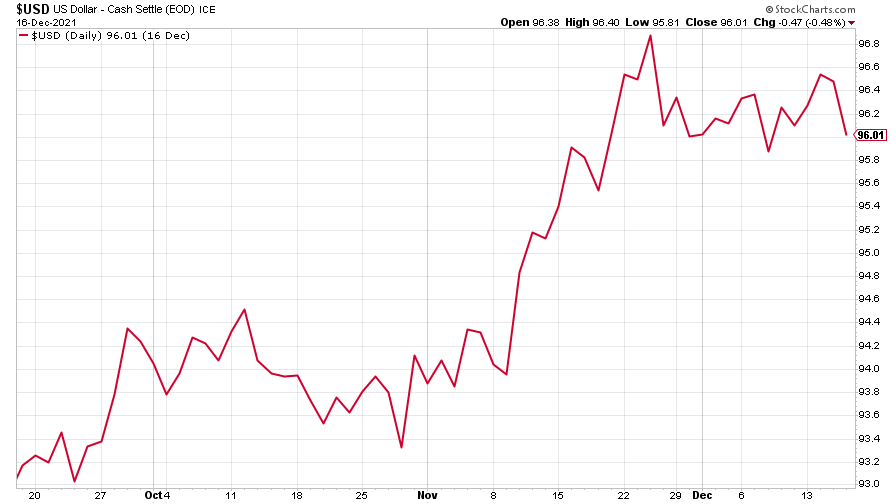
(DXY: three months)
The yield on the ten-year US government bond edged higher after the Fed confirmed it is tightening monetary policy. Yields move inversely to bond prices.
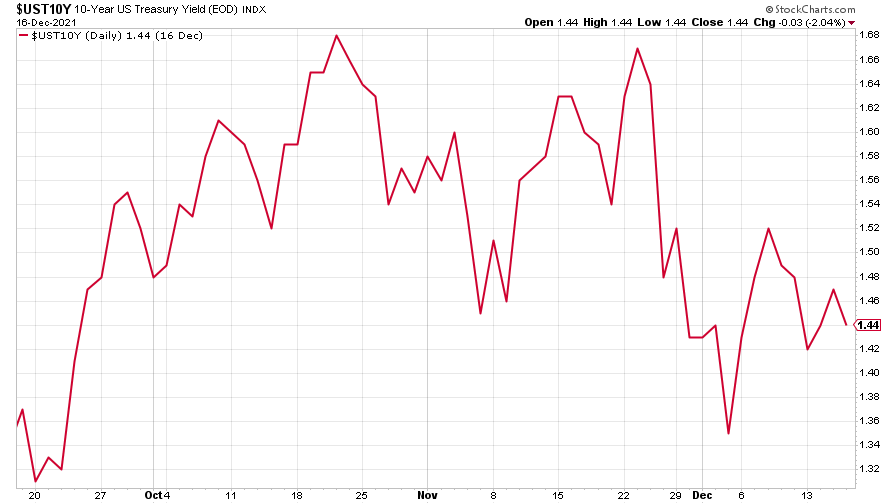
(Ten-year US Treasury yield: three months)
But the yield on the Japanese ten-year bond fell.
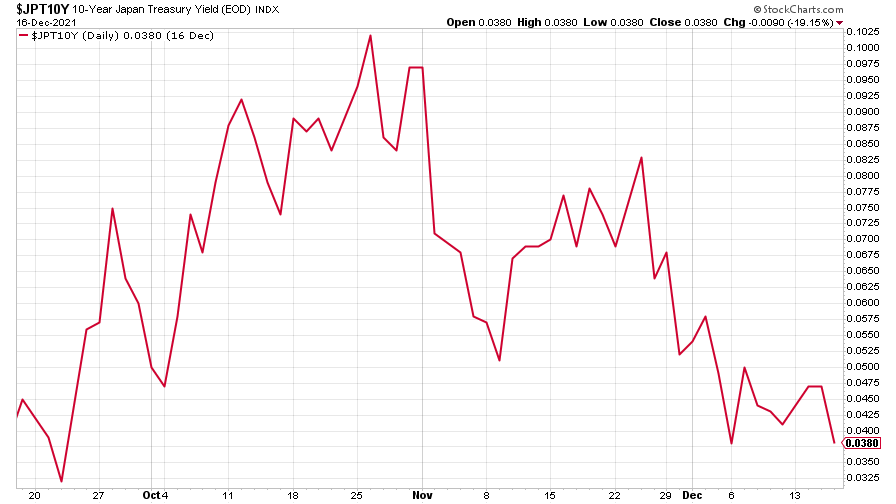
(Ten-year Japanese government bond yield: three months)
And the yield on the ten-year German Bund rose, in line with higher US yields as US data showed on Tuesday that US prices rose more than expected in November, suggesting that inflation may be high for some time to come.
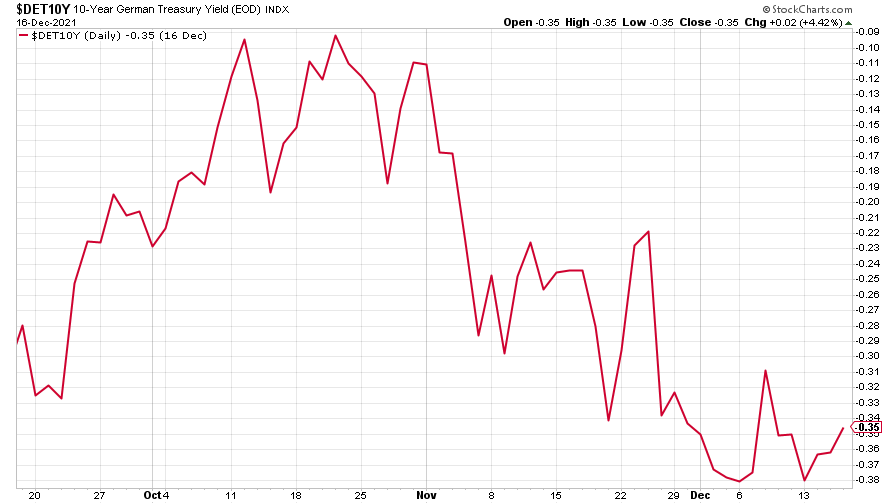
(Ten-year Bund yield: three months)
Copper prices rose from the previous week.
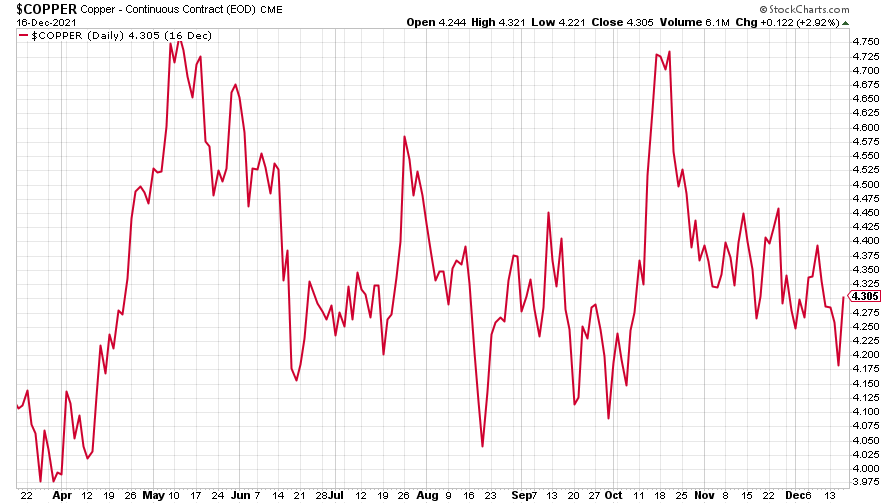
(Copper: nine months)
And the closely-related Aussie dollar rose after strong jobs data made it more likely the central bank will also taper its pandemic-era bond buying in early 2022, following the Fed.
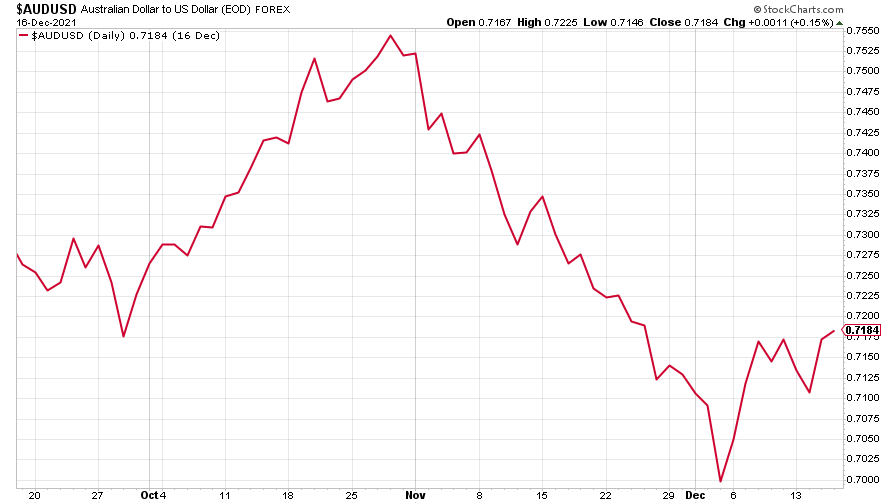
(Aussie dollar vs US dollar exchange rate: three months)
Bitcoin fell as markets got wobbly after the Fed meeting.

(Bitcoin: three months)
US weekly initial jobless claims rose by 18,000 to 206,000. The four-week moving average was 203,750, a decrease of 16,000 from the previous week's revised average.
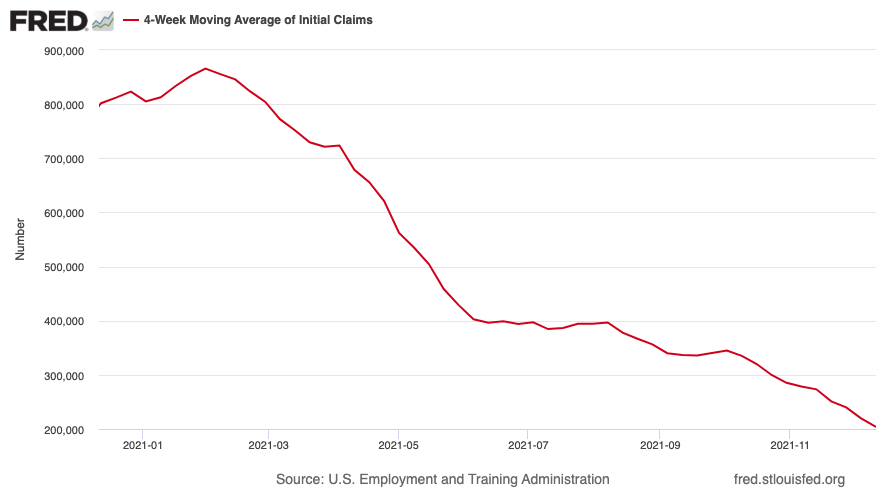
(US initial jobless claims, four-week moving average: since Jan 2021)
Brent rose as falling stockpiles and as upbeat predictions from the Fed offset Omicron fears.
(Brent crude oil: three months)
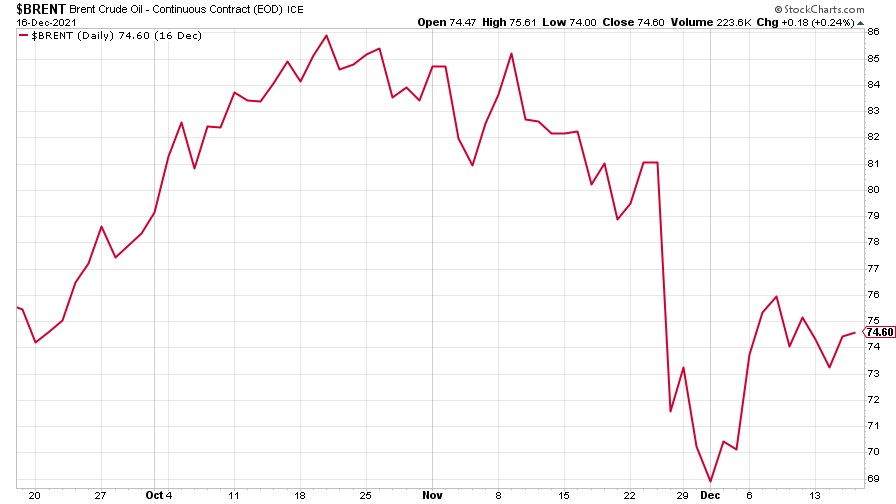
Amazon fell, as the Fed's decision caused big tech shares to tumble on Friday.
(Amazon: three months)
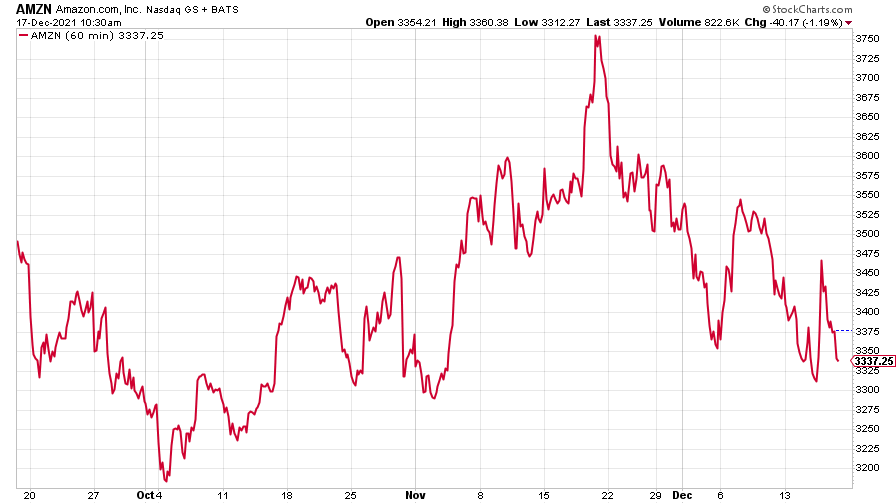
(Tesla: three months)
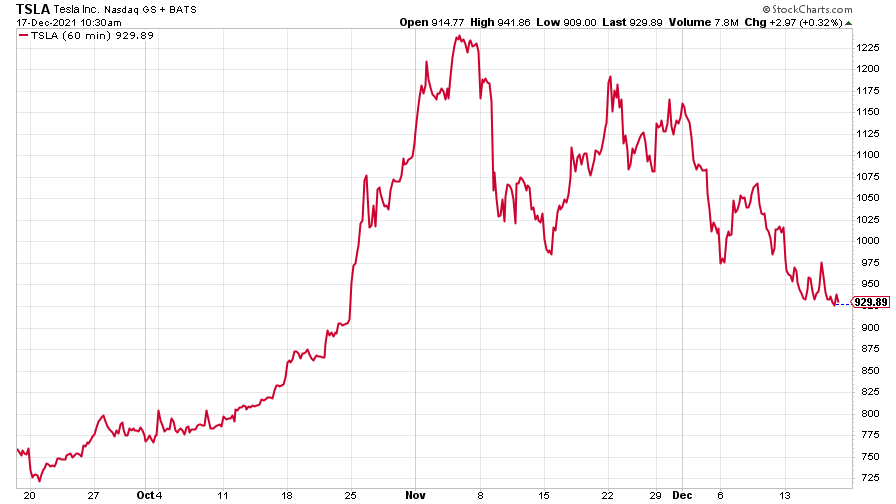
Tesla was little changed from the previous week.
Have a great weekend.
Get the latest financial news, insights and expert analysis from our award-winning MoneyWeek team, to help you understand what really matters when it comes to your finances.
Saloni is a web writer for MoneyWeek focusing on personal finance and global financial markets. Her work has appeared in FTAdviser (part of the Financial Times), Business Insider and City A.M, among other publications. She holds a masters in international journalism from City, University of London.
Follow her on Twitter at @sardana_saloni
-
 Goodwin: A superlative British manufacturer to buy now
Goodwin: A superlative British manufacturer to buy nowVeteran engineering group Goodwin has created a new profit engine. But following its tremendous run, can investors still afford the shares?
-
 Is US stock market exceptionalism over?
Is US stock market exceptionalism over?US stocks trailed the rest of the world in 2025. Is this a sign that a long-overdue shift is underway?
-
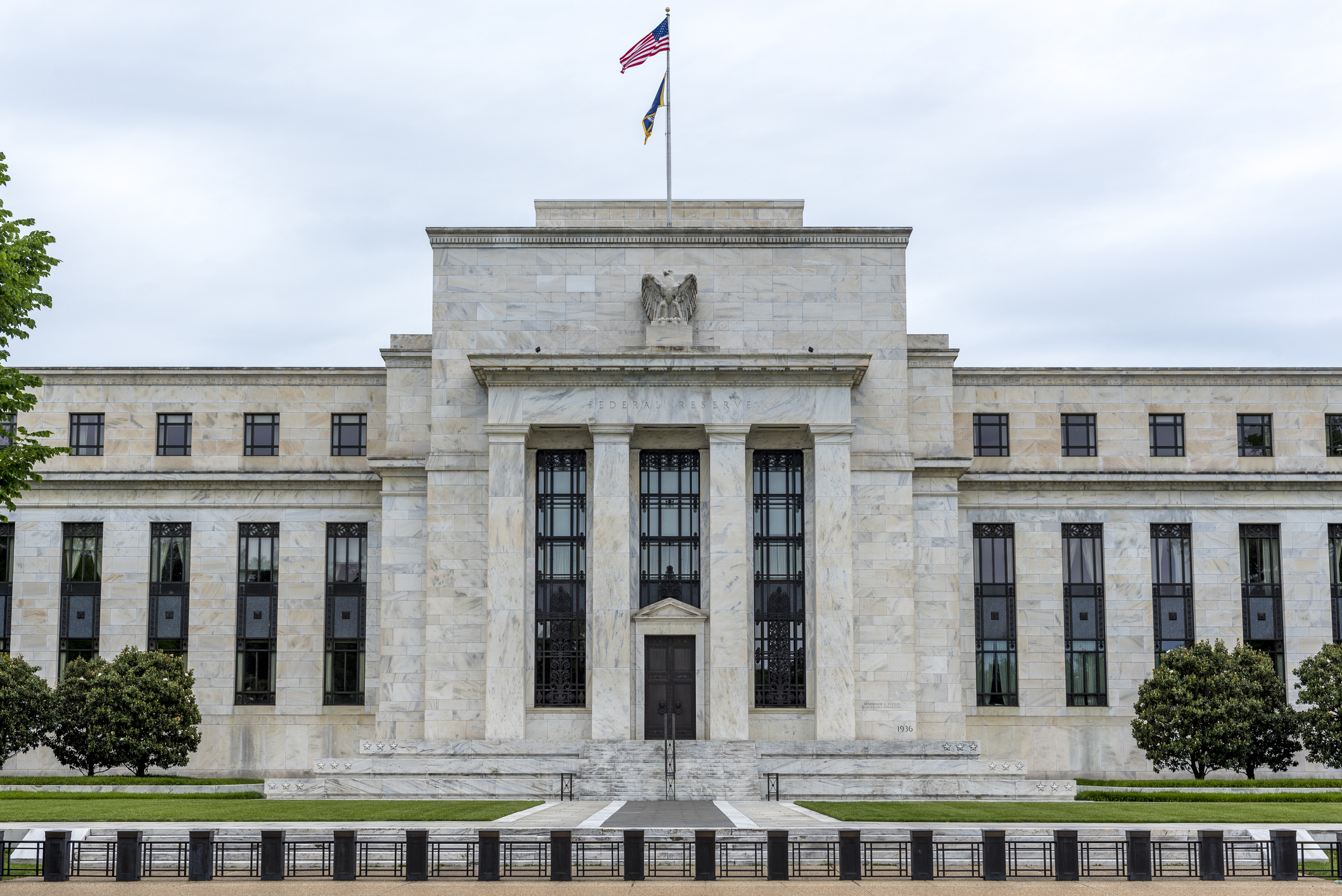 'Governments are launching an assault on the independence of central banks'
'Governments are launching an assault on the independence of central banks'Opinion Say goodbye to the era of central bank orthodoxy and hello to the new era of central bank dependency, says Jeremy McKeown
-
 Do we need central banks, or is it time to privatise money?
Do we need central banks, or is it time to privatise money?Analysis Free banking is one alternative to central banks, but would switching to a radical new system be worth the risk?
-
 Will turmoil in the Middle East trigger inflation?
Will turmoil in the Middle East trigger inflation?The risk of an escalating Middle East crisis continues to rise. Markets appear to be dismissing the prospect. Here's how investors can protect themselves.
-
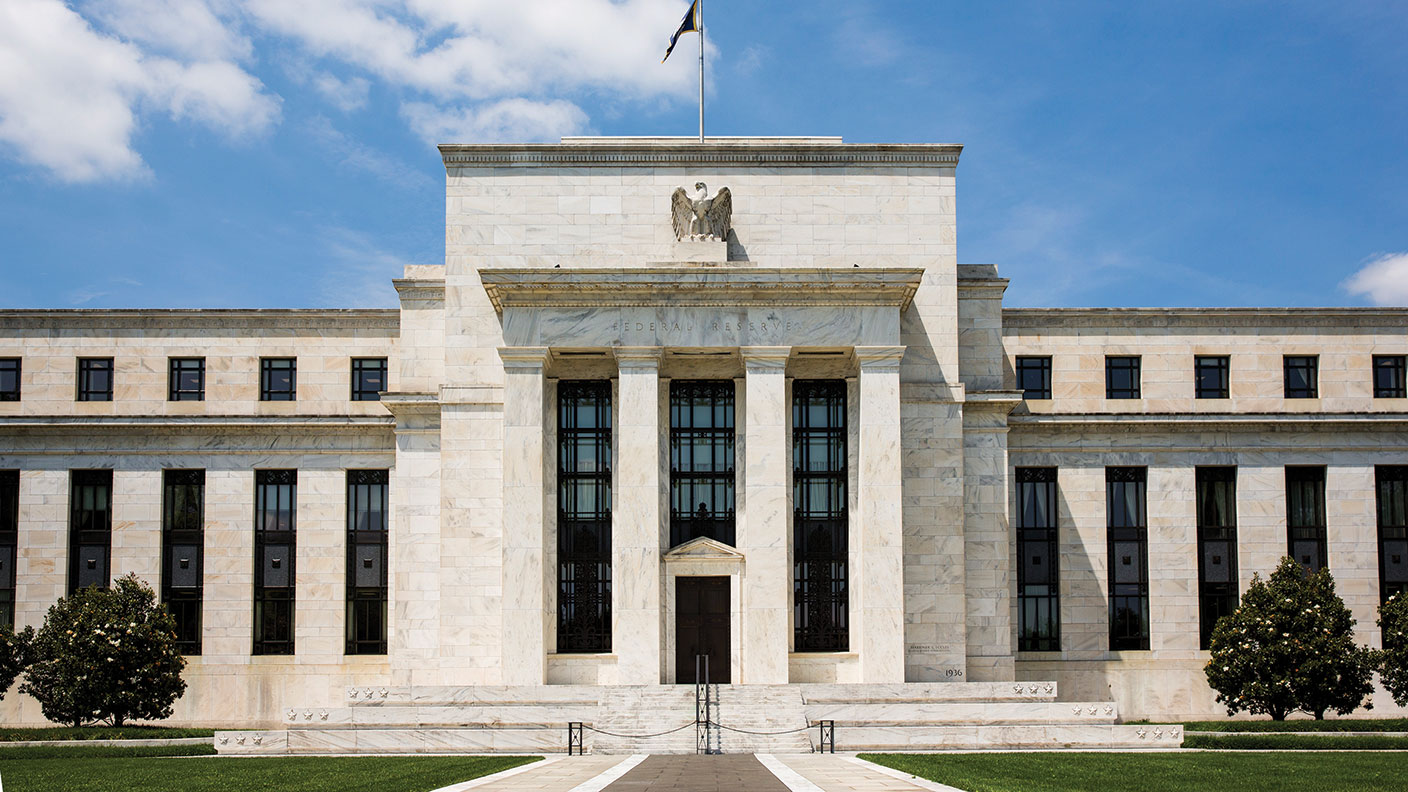 Federal Reserve cuts US interest rates for the first time in more than four years
Federal Reserve cuts US interest rates for the first time in more than four yearsPolicymakers at the US central bank also suggested rates would be cut further before the year is out
-
 The Bank of England can’t afford to hike interest rates again
The Bank of England can’t afford to hike interest rates againWith inflation falling, the cost of borrowing rising and the economy heading into an election year, the Bank of England can’t afford to increase interest rates again.
-
 Interest rates held at 5.25% again
Interest rates held at 5.25% againThe Bank of England has kept rates at 5.25% again, in a widely anticipated move. We look at what it means for your money - and what the Bank’s next move could be
-
 US inflation rises to 3.7% as energy prices surge - will the Fed hike rates?
US inflation rises to 3.7% as energy prices surge - will the Fed hike rates?US consumer price index rose in August but markets do not expect a rate hike this month
-
 The debt ceiling illustrates America’s empire of debt
The debt ceiling illustrates America’s empire of debtOpinion The US has never quite got the hang of the conquering business as the debt ceiling debate shows.
